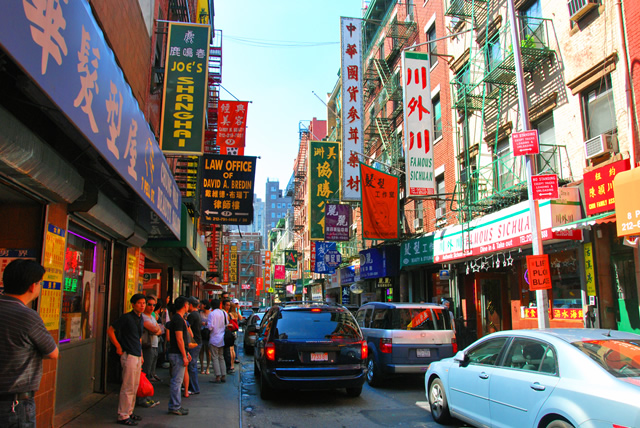 Well the simple answer is, around 800 spoken languages. Or to be more precise, Papua New Guinea is home to an astounding 830 different languages. New York City comes in a close second, with around 800 spoken languages – and that’s not counting when the United Nations is in session on Manhattan’s East Side. Sadly, some of the rarer tongues spoken in New York and Papua New Guinea, and around the globe for that matter, are rapidly becoming extinct – at the rate of around one language every two weeks.
Well the simple answer is, around 800 spoken languages. Or to be more precise, Papua New Guinea is home to an astounding 830 different languages. New York City comes in a close second, with around 800 spoken languages – and that’s not counting when the United Nations is in session on Manhattan’s East Side. Sadly, some of the rarer tongues spoken in New York and Papua New Guinea, and around the globe for that matter, are rapidly becoming extinct – at the rate of around one language every two weeks.
As the Economist points out a group of linguists in New York City is working to codify some of the city’s most endangered tongues.
[div class=attrib]From the Economist:[end-div]
New York is also home, of course, to a lot of academic linguists, and three of them have got together to create an organisation called the Endangered Language Alliance (ELA), which is ferreting out speakers of unusual tongues from the city’s huddled immigrant masses. The ELA, which was set up last year by Daniel Kaufman, Juliette Blevins and Bob Holman, has worked in detail on 12 languages since its inception. It has codified their grammars, their pronunciations and their word-formation patterns, as well as their songs and legends. Among the specimens in its collection are Garifuna, which is spoken by descendants of African slaves who made their homes on St Vincent after a shipwreck unexpectedly liberated them; Mamuju, from Sulawesi in Indonesia; Mahongwe, a language from Gabon; Shughni, from the Pamirian region of Tajikistan; and an unusual variant of a Mexican language called Totonac.
Each volunteer speaker of a language of interest is first tested with what is known as a Swadesh list. This is a set of 207 high-frequency, slow-to-change words such as parts of the body, colours and basic verbs like eat, drink, sleep and kill. The Swadesh list is intended to ascertain an individual’s fluency before he is taken on. Once he has been accepted, Dr Kaufman and his colleagues start chipping away at the language’s phonology (the sounds of which it is composed) and its syntax (how its meaning is changed by the order of words and phrases). This sort of analysis is the bread and butter of linguistics.
Every so often, though, the researchers come across a bit of jam. The Mahongwe word manono, for example, means “I like” when spoken soft and flat, and “I don’t like” when the first syllable is a tad sharper in tone. Similarly, mbaza could be either “chest” or “council house”. In both cases, the two words are nearly indistinguishable to an English speaker, but yield starkly different patterns when run through a spectrograph. Manono is a particular linguistic oddity, since it uses only tone to differentiate an affirmative from a negative—a phenomenon the ELA has since discovered applies to all verbs in Mahongwe.
[div class=attrib]More from theSource here.[end-div]
[div class=attrib]Image courtesy of Wikipedia / Creative Commons.[end-div]
